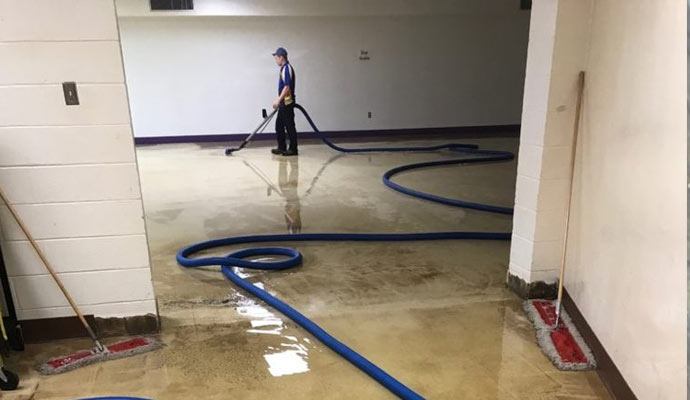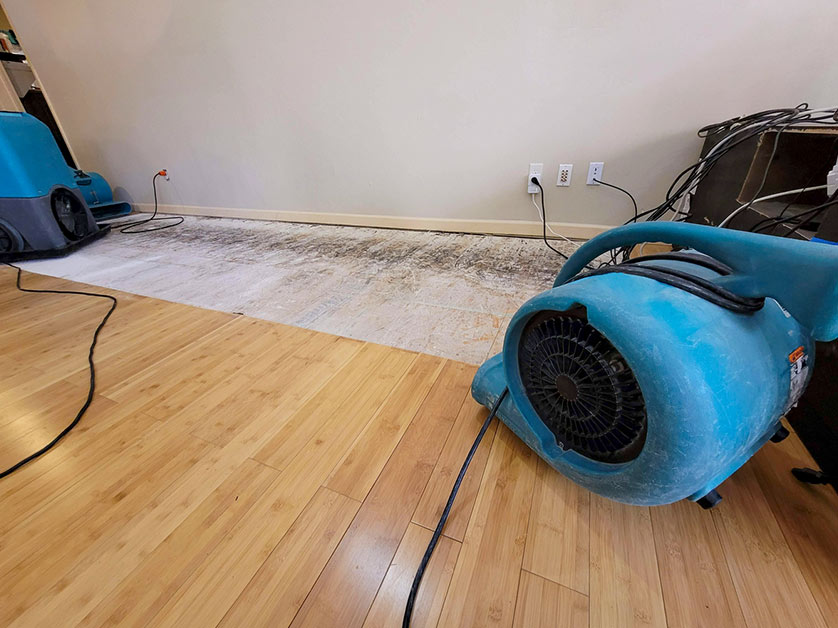A beginner’s guide to understanding Water Damage Restoration
Water Damage Restoration 101: Recognizing the Process and Price
Water damage can strike suddenly, leaving homeowners in a state of confusion. Recognizing the restoration procedure is vital for effective healing. From reviewing the damage to picking the ideal solution provider, each action affects the overall result and cost. Elements such as the sort of water damage and urgency also play a substantial function. What are the specific techniques utilized in restoration, and how can one prepare for possible costs?
Sorts Of Water Damage

First Evaluation and Examination

Water Removal Methods
Following the first evaluation, efficient water removal methods are used to mitigate damage and prevent further issues. These techniques involve using specific devices such as industrial-grade vacuums and submersible pumps - Water Damage Restoration. The option of technique depends upon the volume of water present and the kind of products influenced. For standing water, submersible pumps are commonly utilized for fast elimination, while vacuum cleaners are perfect for drawing out water from carpetings and furniture. Furthermore, progressed methods like water extraction mats may be utilized for hard-to-reach locations - Flood Cleanup Services. The goal is to eliminate as much water as possible, lessening the possibility for mold and mildew development and architectural damage. Prompt and efficient water extraction is vital in the general water damage repair procedure
Drying Out and Dehumidification Process
When the water removal is full, the drying and dehumidification procedure comes to be vital to bring back the damaged location. This stage normally uses industrial-grade dehumidifiers and air moving companies to efficiently reduce wetness levels. The dehumidifiers attract wet air, getting rid of excess moisture, while air movers flow air to speed up dissipation. Tracking devices is typically utilized to track moisture and temperature level levels, guaranteeing ideal drying problems. The period of this process can differ relying on the level of the water damage and environmental aspects. It is necessary to thoroughly dry all affected materials, including walls, flooring, and furnishings, to stop mold growth and structural damage. Correct execution of this action is critical for a successful remediation end result.
Cleaning and Sterilizing Affected Locations
As soon as the drying procedure is complete, a detailed initial assessment and inspection of impacted locations is vital to identify contamination degrees. Efficient cleansing strategies and ideal products must then be employed to remove debris and discolorations. Finally, sanitization and disinfection techniques are necessary to assure that dangerous virus are gotten rid of, bring back the space to a risk-free condition
First Analysis and Examination
Prior to beginning any type of restoration efforts, a complete first analysis and evaluation of the impacted areas are important for reliable cleaning and sanitizing. This procedure entails determining the degree of water damage, determining the source of the water intrusion, and reviewing the products influenced. Assessors typically search for indications of mold development, structural stability concerns, and damaged possessions. The assessment also consists of inspecting wetness degrees using specialized equipment to assure no concealed water pockets stay, as these can cause further complications. Documenting the searchings for is vital for planning the next actions in the repair procedure. A detailed initial analysis allows remediation experts to create a targeted method for effective cleansing and sterilizing, inevitably decreasing damage and health and wellness dangers.
Cleansing Methods and Products
Efficient cleansing and sanitizing of water-damaged locations need a selection of strategies and products customized to the certain products influenced. For porous surfaces like drywall and carpets, removal techniques are vital to remove excess dampness, adhered to by deep cleansing with specialized cleaning agents. Non-porous products such as ceramic tile or steel can be cleaned using commercial-grade cleaners that effectively remove impurities. Heavy steam cleaning is another reliable technique, especially for carpetings and upholstery, as it uses high temperature levels to remove microorganisms and mold and mildew (Water Damage Restoration). Furthermore, environment-friendly products are progressively popular for their safety and efficacy - Water Damage Restoration. Inevitably, picking the proper cleaning methods and products not only assures prompt cleanliness however also help in preventing more damage and carcinogen connected with water breach
Sanitization and Disinfection Methods
When dealing with water damage, appropriate sanitization and disinfection techniques are vital to ensure the security and wellness of the afflicted environment. After initial cleaning, surfaces should be treated with suitable check here disinfectants to eliminate microorganisms, mold and mildew, and germs that flourish in wet conditions. Typical methods include the use of EPA-approved chemical disinfectants, which can be used via splashing or wiping methods. Additionally, ultraviolet (UV) light systems can effectively sanitize areas by neutralizing bacteria without rough chemicals. The option of approach usually depends on the kind of products impacted and the level of contamination. Inevitably, extensive sanitization not just restores a risk-free space yet additionally helps avoid future wellness threats connected with remaining dampness and mold and mildew growth.

Repairs and Restoration Options
Examining the damage triggered by water direct exposure is crucial for establishing the ideal repair services and repair choices. Property owners may encounter different issues, including harmed drywall, deformed flooring, and jeopardized structural components. Depending upon the level of the damage, repairs might entail changing areas of drywall, setting up new flooring, or strengthening architectural beams. In cases of severe damage, full substitute of damaged products could be needed. In addition, expert restorers commonly suggest utilizing moisture meters to assess surprise dampness degrees prior to choosing the very best strategy. It is essential to act immediately to prevent mold development and more damage. Picking the best options not just brings back the home however also ensures long-lasting safety and capability.
Elements Affecting Restoration Costs

The level of water damage directly influences the restoration costs property owners can anticipate to sustain. Factors such as the source of the water, the duration of exposure, and the damaged materials considerably affect pricing. For example, tidy water damage from a broken pipe is normally much less pricey to restore compared to damage triggered by sewage. In addition, the degree of contamination determines the requirement for specialized cleaning and disposal services, even more enhancing costs. Geographic location additionally contributes, as local labor rates and schedule of restoration solutions can vary. The urgency of the reaction impacts expenses; quicker interventions usually lead to lower overall expenditures by protecting against further damage. Recognizing these elements is important for property owners when estimating restoration prices.
The 3 primary types of water damage are categorized based on contamination degrees: clean water, gray water, and black water. An extensive initial assessment and examination are essential actions in the water damage repair process. For standing water, submersible pumps are typically made use of for quick elimination, while vacuums are perfect for removing water from rugs and upholstery. The level of water damage straight affects the repair costs homeowners can anticipate to incur. Tidy water damage from a broken pipe is normally much less expensive to restore contrasted to damage caused by sewer.